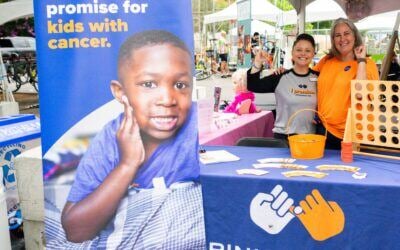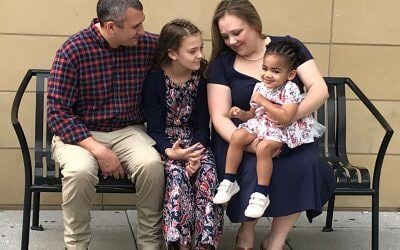Client Story
GREATER PUBLIC
A New Way Forward: How Public Media is Revamping Its Fundraising to Find Major Gifts Success
Fundraising in public media has a long history of highly successful membership drives. But over recent years, the trend line for membership has been flattening, and it became clear that philanthropic giving remained underdeveloped. Together, Veritus Group and Greater Public set out to see if public media stations could shift from a membership mindset into a relationship fundraising model.
01. Problem / Challenge
Fundraising in public media has a long history of highly successful membership drives. But over recent years, the trend line for membership has been flattening, and it was clear that philanthropic giving remained underdeveloped. Greater Public and their member public media organizations knew they needed to develop additional revenue streams to support their mission, but they struggled with how to get there given the unique challenges, culture, and quirks of public media.
02. Solution
The pilot program focused on providing the case for a relationship-based fundraising model that embraces and values the history of membership programs in public media, while equipping fundraising teams with tools to create authentic donor relationships. Veritus Group and Greater Public worked together to gain organization-wide buy-in for the process, develop data-informed giving tiers, and establish a consistent structure and approach for Major Gift Officers. Veritus Group also identified a significant opportunity to strengthen and unclog the mid-level portion of the donor pipeline to move more donors into major gifts. By implementing a system and structure for major gifts (and for mid-level programs at two stations), the pilot programs gained a consistent language, a system to qualify donors, tools to build long-lasting donor relationships, and a strategy to create meaningful donor offers.
03. Results
By the end of the second year of the pilot program, the participating stations – Colorado Public Radio, WHYY, WAMU, and WCMU – saw some incredible results. Major giving revenue was up 52% and revenue per donor rose by 82%. Additionally, value attrition rates for the pilot stations improved by 105% overall.
"We thought we had mid-level programs when we went into this major giving work with Veritus. But really what we had was enhanced membership, sort of a Giving Club. And there wasn’t a very personalized approach there. And there also wasn’t communication focused on the value and the impact of the organization at that mid-level. I think we agree that that’s been a missing piece, and a missing part of the pipeline, that public media organizations need to address along with their major giving work. So it’s now mid-level and major gifts, hand in hand."
- Joyce MacDonald
President & CEO, Greater Public
A Transformed Approach to Major Gifts
Building on a membership model to cultivate deeper relationships with donors
What the Organization Needed
Public media has a loyal membership base, but the membership renewal model was also limiting potential revenue. As Joyce MacDonald, President & CEO of Greater Public explained: “Donors are going to give what you ask for, right? And you’ve all heard us on the air talking about how $120 a year is going to get you a coffee mug. And so that’s what people have been giving.”
Our Recommendation
As the results and approach from the pilot program were adopted more broadly across public media organizations, additional stations began to see the value of a dedicated Veritus coach to help fundraisers qualify those donors who wanted a deeper relationship with the organization and then properly manage that caseload. At the same time, mid-level programs were built to identify and cultivate future donors for major gifts.
.jpg?width=980&height=622&name=Greater-Public-Logo-980x622%20(1).jpg)
The Results
82%
Increase in Revenue
![]()
By year two of the pilot program with Veritus, revenue increased by nearly 82% with additional revenue totaling $745,717.

105%
Turnaround in Value Attrition
![]()
After the first year of the pilot program with major gifts, value attrition improved by 105% (from -46% of value lost year over year, to +2.5% value retained). This means not only did existing donors stay; in aggregate they gave 2.5% more than they had previously.

77%
Average Increase in Giving Per Donor
![]()
During the pilot program, the value per donor increased by nearly 77% to an average gift of $5,215.

82%
Increase in Revenue
By year two of the pilot program with Veritus, revenue increased by nearly 82% with additional revenue totaling $745,717.
105%
Turnaround in Value Attrition
After the first year of the pilot program with major gifts, value attrition improved by 105% (from -46% of value lost year over year, to +2.5% value retained). This means not only did existing donors stay; in aggregate they gave 2.5% more than they had previously.
77%
Average Increase in Giving Per Donor
During the pilot program, the value per donor increased by nearly 77% to an average gift of $5,215.
Ready to get results like these for your organization? Get started with our free donor file assessment. There’s no obligation to work with us, and it’s completely free and confidential.
Other organizations that have taken us up on this free assessment have been able to determine:
-
Where existing donors are giving less
-
The rate at which they’re losing existing donor value
-
Where there’s potential for a turnaround
-
How many fundraisers they really need in mid-level and major gifts
-
Their revenue potential over time
The sooner you understand what’s happening in your data, the sooner you can take action. This is information you need to be successful in your fundraising efforts and make an even greater impact on your mission. And it starts when you request a free donor file assessment.








